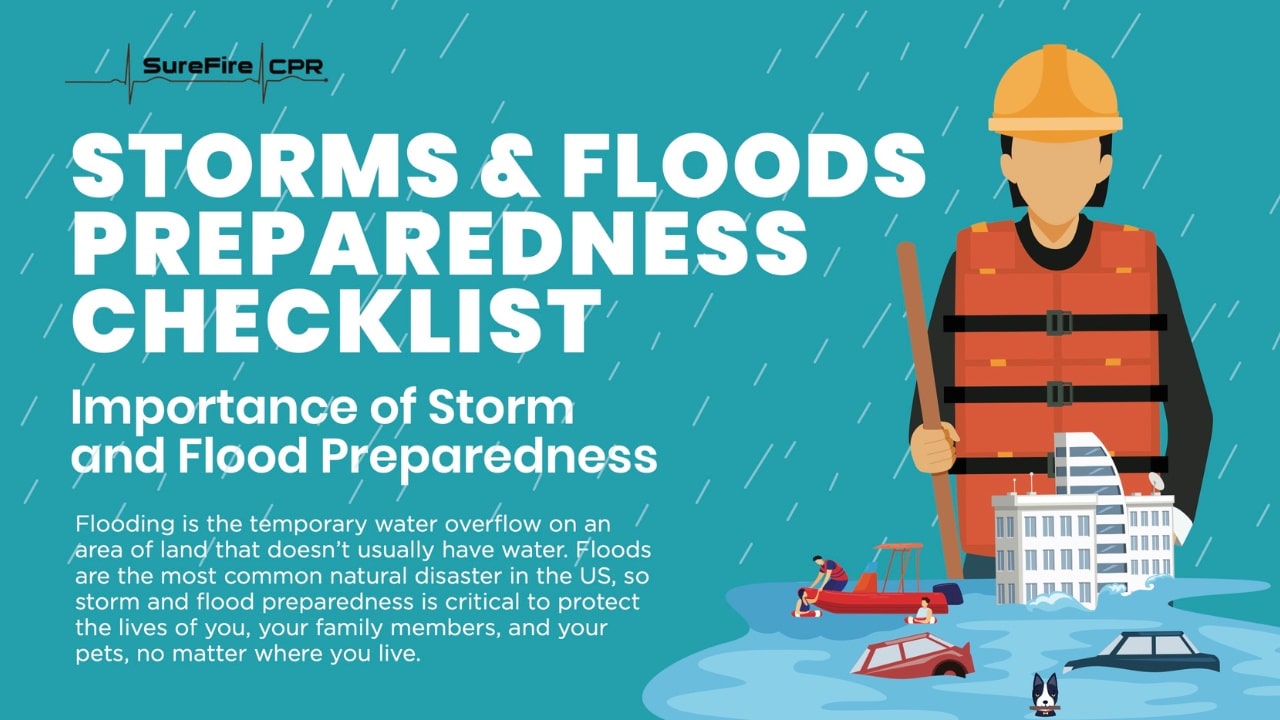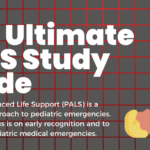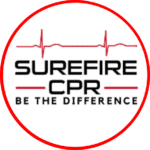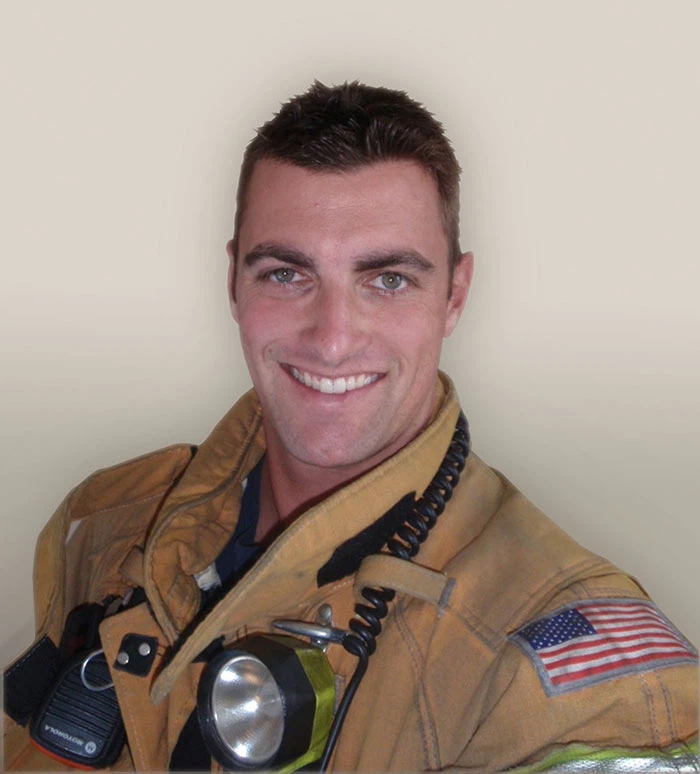Importance of Storm and Flood Preparedness
Floods are the most common natural disaster in the US, so storm and flood preparedness is critical to protect the lives of you, your family members, and your pets. From getting to safe shelter to ensuring your family has essential supplies in the event services are cut off for a time, preparation makes a difference in how safely and comfortably you may wait out a flood.
Flooding refers to a temporary water overflow on an area of land that doesn’t usually have water. Floods can occur due to snow, rain, storm surges, coastal storms, and overflows of bodies of water like rivers. Some are gradual while others occur very quickly. In some cases, they occur without any warning.
Flood Safety Tips
Flooding is an extremely dangerous event that can lead to death and serious damage to buildings and roads. Power outages, transportation disruptions, and landslides may also occur with flooding. Floodwaters often contain waste and make drinking water unsafe. By following these flood safety tips now, you can protect the health and safety of your family.
Flood Preparedness Before the Storm
Flood preparedness begins long before there is a threat of one. Begin by learning about the various types of flooding that might occur in your area. For example, if you live near a coast, storm surges and coastal floods might be a higher risk. Residents of areas that have seen recent fires may be more likely to see flooding from burn scars. Dam and levee failures are another concern for people living near them. To learn more, you can visit FEMA’s Flood Map Service Center.
A flood emergency preparedness plan for your household is another must. All of your family members should know what to do and where to go in the event of a flood. Know your evacuation routes and even practice them, as well as shelter plans.
Create a family emergency communication plan that includes contact information for medical facilities, doctors, schools, and service providers. Make sure every family member keeps that information with them stored in their cell phones for easy access. Another copy should be placed in a waterproof bag in a central location of your home.
Create a disaster supply kit that includes:
- One gallon of water per person for several days
- Several-day supply of non-perishable food with manual can opener
- First aid kit that also includes non-prescription and prescription medications
- Cleaning supplies, including garbage bags
- Solar powered charging block (for cell phones)
- Flashlights with extra batteries
- Copies of important documents, sealed in a waterproof bag
Keep all your items in airtight plastic bags and place the bags in storage containers so they are easy to carry out of your home if you ever need them.
Flood Preparedness During the Storm
If a storm or flood is occurring or imminent, your first priority is to get out of areas subject to flooding, move to higher ground, and seek safe shelter right away. Follow all evacuation orders immediately. If time permits, move your essential items to safe ground as well.
Monitor weather updates using these NWS websites:
You can also tune into NOAA All Hazards Radio or the Wireless Emergency Alerts for Flash Flood Warnings.
Follow your evacuation plan and route as best you can. However, never attempt to drive over a flooded road. Keep in mind that just 6 inches of moving flood water can knock you down and 12 inches can float your car.
If you are trapped in a building, get to the highest level you can. Avoid closed attics and only get on the roof if necessary and signal for help once you are there.
Flood Preparedness After the Storm
Return to your home after a flood only when authorities tell you it is safe to do so. Once you do:
- Stay away from damaged areas and avoid floodwater since it can be contaminated
- Throw out any food or drinking water that has been in contact with floodwater
- Watch for snakes and other animals that often enter buildings during a flood
- Clean and disinfect all items that got wet
- Evacuate immediately if you smell gas or chemical fumes
Check your home for damage to the foundation, walls, water lines, or electrical systems. Clean up toxic and flammable liquids and spilled medications right away. Always wear protective clothing during the cleanup phase. If you have damage, contact your insurance company.
Stay Informed
Information is a powerful advantage in storm and flood preparedness. Whether you need to know the latest on weather conditions in your area, or you want more help in creating a disaster supply kit, these resources will help you get ready for any weather event that might arise:
- Be a force of nature: https://www.weather.gov/wrn/force
- Flood Safety Awareness: https://www.weather.gov/safety/flood
- TADD: https://www.weather.gov/safety/flood-turn-around-dont-drown
- NWS: https://www.weather.gov
- US National Weather Service Facebook page
- US National Weather Service Twitter page
- NWS AHPS: https://water.weather.gov/ahps/
Related Posts
Get additional information about how to prepare for other emergency events here:
How to Prepare for an Earthquake
Do you live in an earthquake-prone area? Make sure your home and family are ready for one of these natural disasters with the below guides.
House Fire Preparedness Plan
Our house fire preparedness plan gives you the steps you need to prevent and prepare for a possible house fire.
Mudslide Preparedness and Safety
You may not be able to stop a mudslide, but you can learn how to respond safely if one does occur with our mudslide preparedness and safety tips.
FAQ’s
What not to do in a flood?
The most important thing NOT to do during a flood is remember Turn Around! Don’t Drown! Remember that just 6 inches of fast-moving flood water can knock you down and 12 inches can float your vehicle. Never try to walk, swim, or drive through floodwaters.
How can I protect my home from flooding?
FEMA offers a variety of prevention steps you can take, including:
- Maintain proper drainage and water runoff
- Pay special attention to lot grading
- Raise utilities, service equipment, and electrical system components
- Attach fuel tanks outdoors to concrete slabs
- Seal foundation and basement walls
- Install a sump pump and rain barrel
What should I include in a flood emergency kit?
Water, food, and a first aid kit are the most important items. Other supplies might include a flashlight, radio, and extra batteries. You should also assemble cleaning supplies and copies of important documents, sealed in a waterproof bag.
How can I stay informed about flood alerts?
These resources will help you remain on top of weather changes in your area:
What steps should I take if I get trapped in a flood situation?
If you are trapped in your car in fast-moving water, remain inside. If water is rising inside the vehicle, move to the roof. If you are trapped in a building, get to the highest level possible, avoiding closed attics. Only move to the roof if absolutely necessary and signal for help from there.
What role does insurance play in flood preparedness?
A flood insurance policy is highly recommended if you live in a low- to high-risk flood zone. This insurance protects your home and property in the event of a flood. Even minor water damage can lead to thousands of dollars in repairs.





















